5 Generational Trends Small Service Businesses Need to Keep Up With
In the vast and ever-evolving realm of digital marketing, success hinges on knowing your audience's preferences, habits, and behaviors. In today's landscape, this knowledge stems from an understanding of how different generations navigate the digital world.
By 2025, these generational stereotypes are evolving faster than ever. While Gen Z still favors bite-sized video and real connections, they’re now joined by Zillennials—a cusp generation blending Millennial nostalgia with Gen Z digital fluency. To succeed, small service businesses must listen to behaviors (how people shop, engage, pay) and employ their digital marketing strategies accordingly.
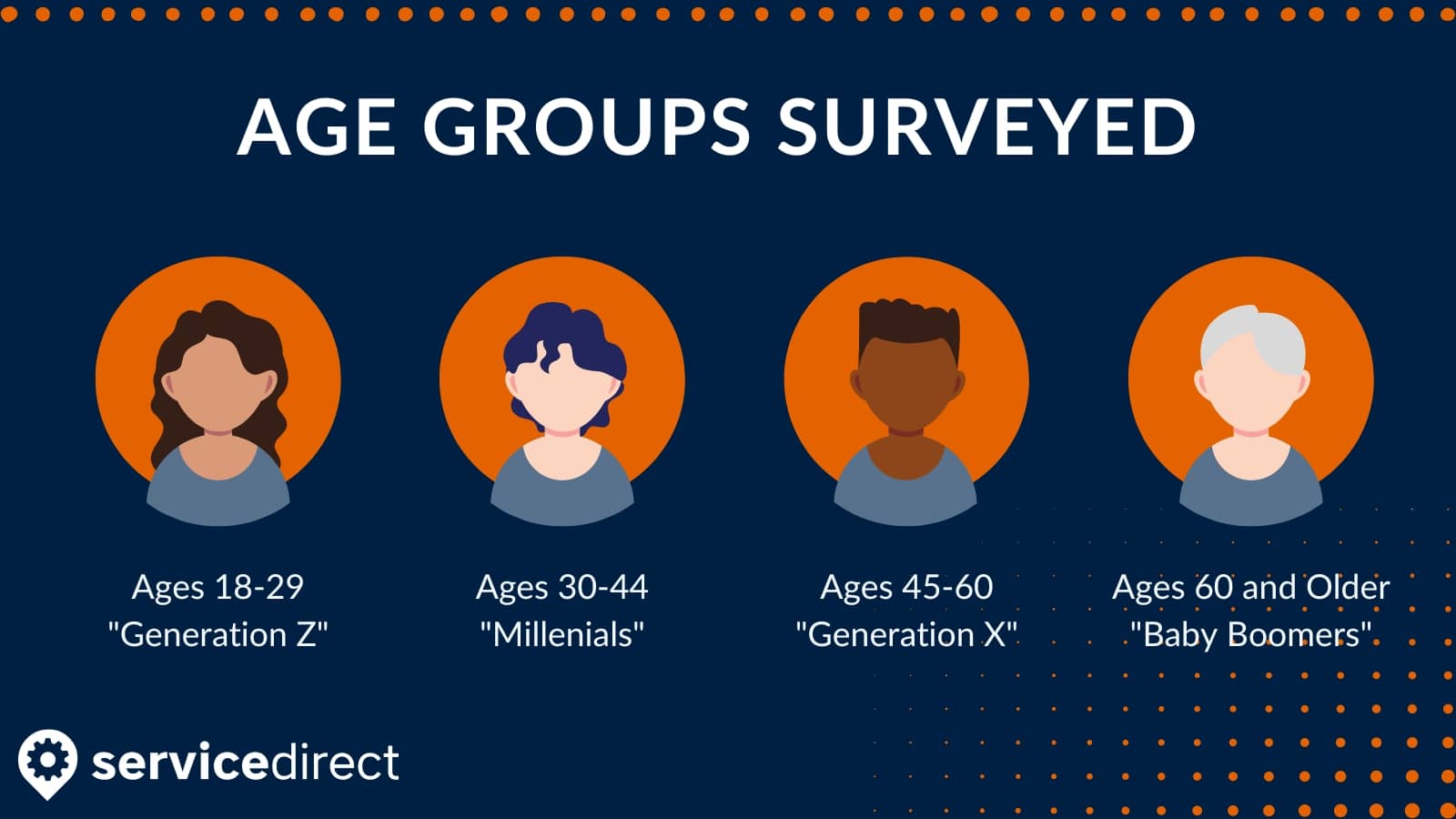
In this blog, we are going to discuss the 5 biggest generational trends we noticed in our survey of 614 US consumers where we asked them various questions about where and how they engage with small businesses.
1. Young People Are Finding Businesses on TikTok
In 2025, Gen Z—and their cusp counterparts, the “Zillennials”—continue to lead the charge in short-form video. Platforms like TikTok, Instagram Reels, and YouTube Shorts are where they spend hours each day, not just consuming entertainment but also researching brands and making purchase decisions.
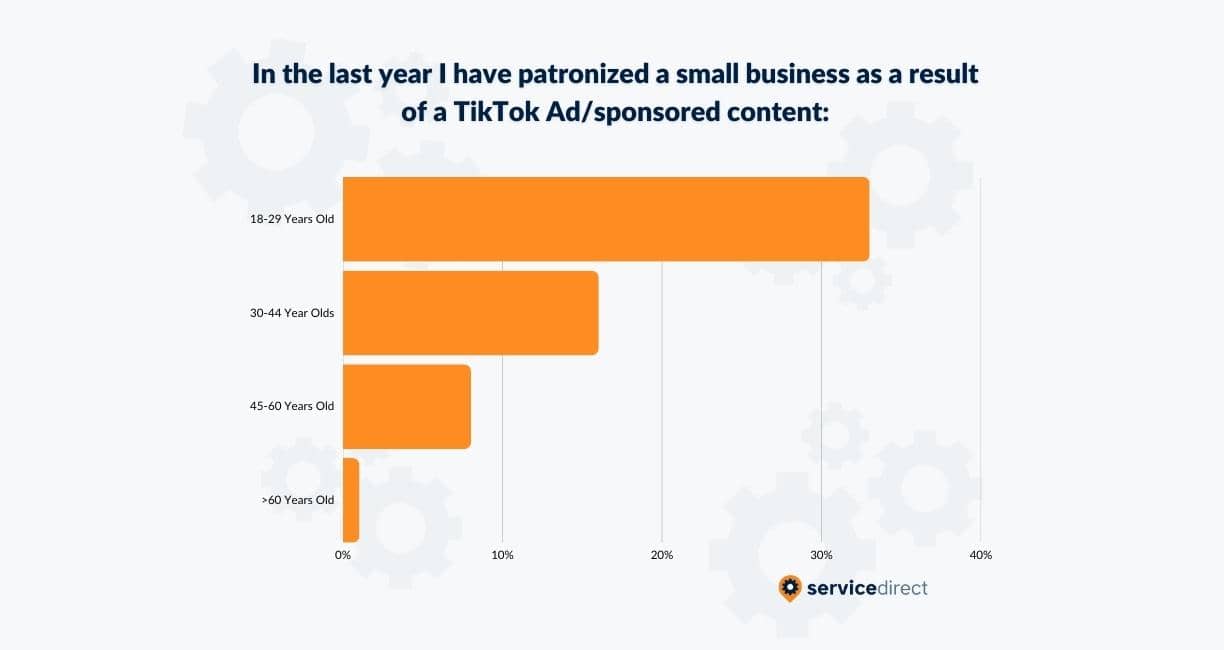
What’s new is the rise of social commerce: Gen Z doesn’t just discover products and services on these platforms; they’re increasingly booking and buying directly through them.
For small service businesses, this shift means that short-form video isn’t optional—it’s expected. Quick, authentic clips that show “before and after” transformations, behind-the-scenes moments, or customer testimonials can build trust and get shared widely.
And because these platforms now allow for in-app booking and payments, you can remove friction and let younger audiences go from discovery to purchase without ever leaving their feed.
To capture Gen Z’s attention, think less polished and more real. A 20-second clip of a technician solving a common problem or a homeowner reacting to a freshly finished job can outperform a high-budget ad. Authenticity, relatability, and speed are what drive engagement—and in 2025, they’re also what drive conversions.
2. Social media Posts Remain Supreme for People Under 30
We were unsurprised to find that social media posts remain the primary form of content consumed by people between the ages of 18 and 29.
With 70% of people under 30 consuming social media content at least once a week versus a 48% consumption rate of video content being the next highest, social media is going to get your small business noticed by the younger generation.
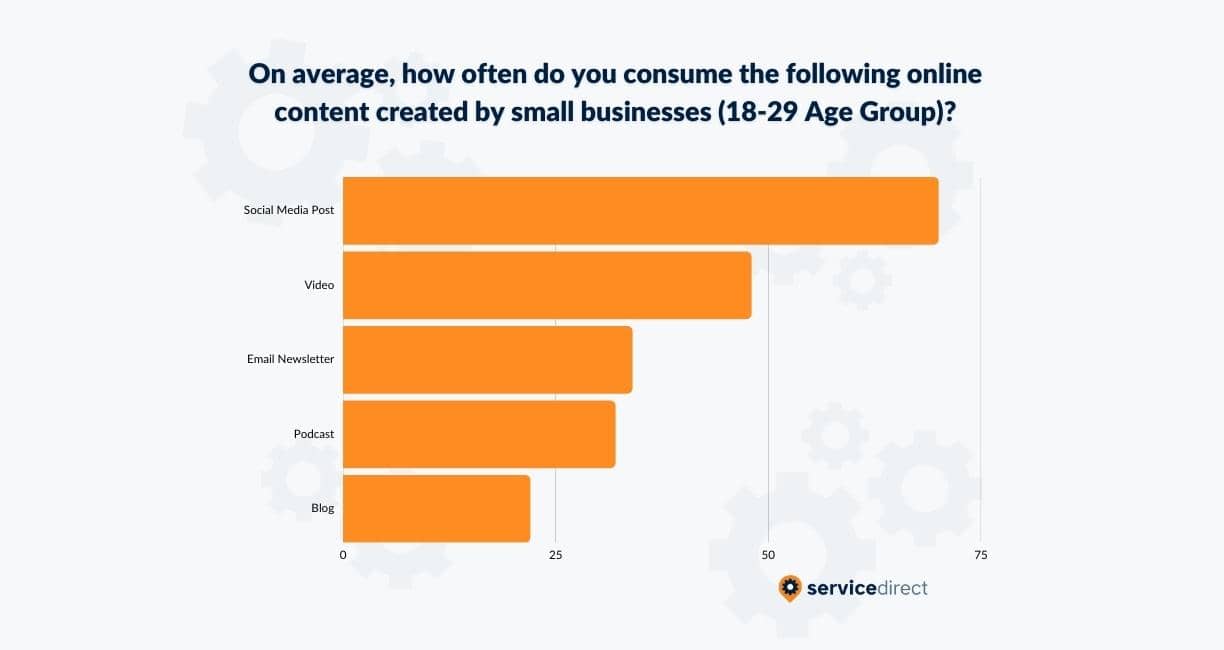
Here are some of the reasons why social media is a powerhouse for brand interactions and product discovery for individuals under 30:
-
Hub of Information: Social media platforms are not just for socializing; they've evolved into information hubs. Younger generations turn to platforms like Instagram, Twitter, and Facebook for business hours, reviews, and, crucially, product information.
-
Visual Dominance: Visual content reigns supreme. High-quality images and videos catch the eyes of younger audiences, influencing their perceptions of brands and products.
-
Authenticity Matters: Younger consumers crave authenticity. Brands that share behind-the-scenes glimpses, user-generated content, and real-life stories resonate more deeply.
-
Engagement is Essential: Responding promptly to comments, messages, and mentions enhances brand trust and builds a loyal community.
-
Power of Influencers: Social media influencers hold significant sway. Partnering with influencers who align with your brand can help you tap into their engaged followers.
-
Micro-Moments Rule: Younger users seek instant gratification. Snackable content like quick tutorials or engaging stories caters to their on-the-go lifestyles.
For individuals under 30, social media isn't just a pastime; it's a window to the world of brands and products. Small businesses can capitalize on this trend by creating content that engages with their audience.
3. Recommendations outweigh a Limited Online Presence for All Ages
In 2025, Gen X may not make headlines like Gen Z or Boomers, but they remain a critical customer base for small service businesses. This generation, now in their 40s and 50s, is both digitally fluent and deeply pragmatic. They’re likely to start their search for a service online, compare multiple providers, and read through reviews before making a decision. Yet at the same time, they still put a premium on trust, reliability, and proven track records.
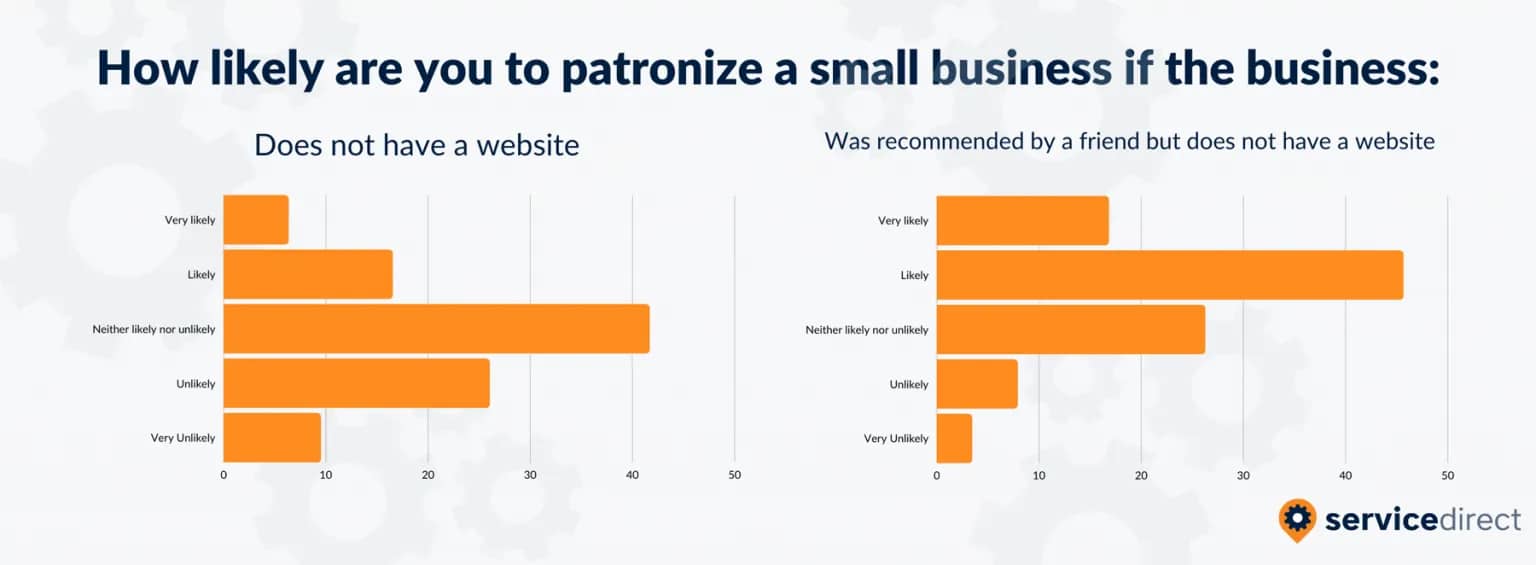
What’s changed since just a few years ago is that Gen X has fully embraced digital convenience.
They expect user-friendly websites, clear online pricing, and the ability to book services without picking up the phone. However, they’re also the group most likely to cross-check credentials, warranties, and customer testimonials before committing. In other words, they want the ease of modern tech but the reassurance of traditional credibility.
For service businesses, winning Gen X means balancing digital efficiency with trust signals.
Ensure your website prominently features reviews, case studies, and guarantees. Offer transparent, straightforward pricing and easy online scheduling, but back it up with consistent communication, on-time arrivals, and strong customer service.
For this generation, showing you’re dependable is just as important as being accessible online.
Do This Now:
- Make reviews and testimonials highly visible on your website and Google Business Profile.
- Offer instant online booking but follow up with a personal confirmation to build trust.
- Highlight guarantees, warranties, and years in business prominently in your messaging.
4. People OVer 60 Almost Never Subscribe to Newsletters
Despite the fact that nearly 40% of businesses incorporate newsletters as a part of their email marketing strategy, we found that almost half of the people over 60 rarely or never subscribe to those newsletters.
In other words, if your primary audience is composed of Baby Boomers, you might not want to spend significant time or money on incorporating newsletters into your digital marketing strategy.
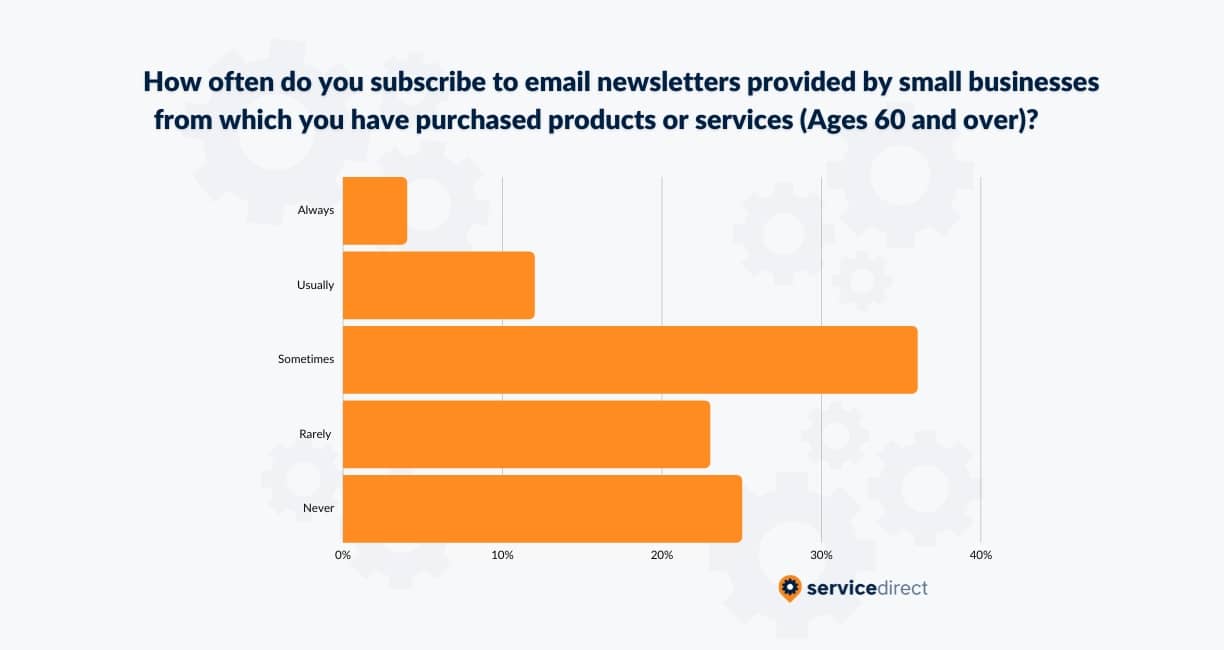
Keep these points in mind if your primary audience is in that over 60 age group:
-
Preference for Personal Contact: Many individuals over 60 still value personal interactions. Phone calls and face-to-face conversations tend to hold greater weight for them than digital exchanges.
-
Offline Touchpoints: Direct mail and community events resonate with this demographic. A well-crafted physical flyer or an invitation to a local charity event your business is hosting can tap into their preference for tangible experiences.
-
Simplicity is Key: For those less accustomed to the digital world, simplicity in communication is essential. Clear, concise messages with minimal technical jargon are more likely to resonate and avoid overwhelming them.
-
Respect for Privacy: Addressing privacy concerns is crucial. Highlight your commitment to data security and ensure transparent communication about how their information is used.
Adapting communication strategies for the over-60 generation requires a blend of traditional and digital approaches. By embracing these tips, you can create meaningful engagement that resonates with this demographic.
5. To Connect With People Under 60, Mobile Optimization is a Must
The prevalence of smartphones and tablets is the primary reason why mobile optimization stands as a foundational pillar for connecting with individuals under 60. In fact, while less than 50% of people over the age of 60 use mobile devices to research small businesses, around 70% of people between 18-60 report using them.
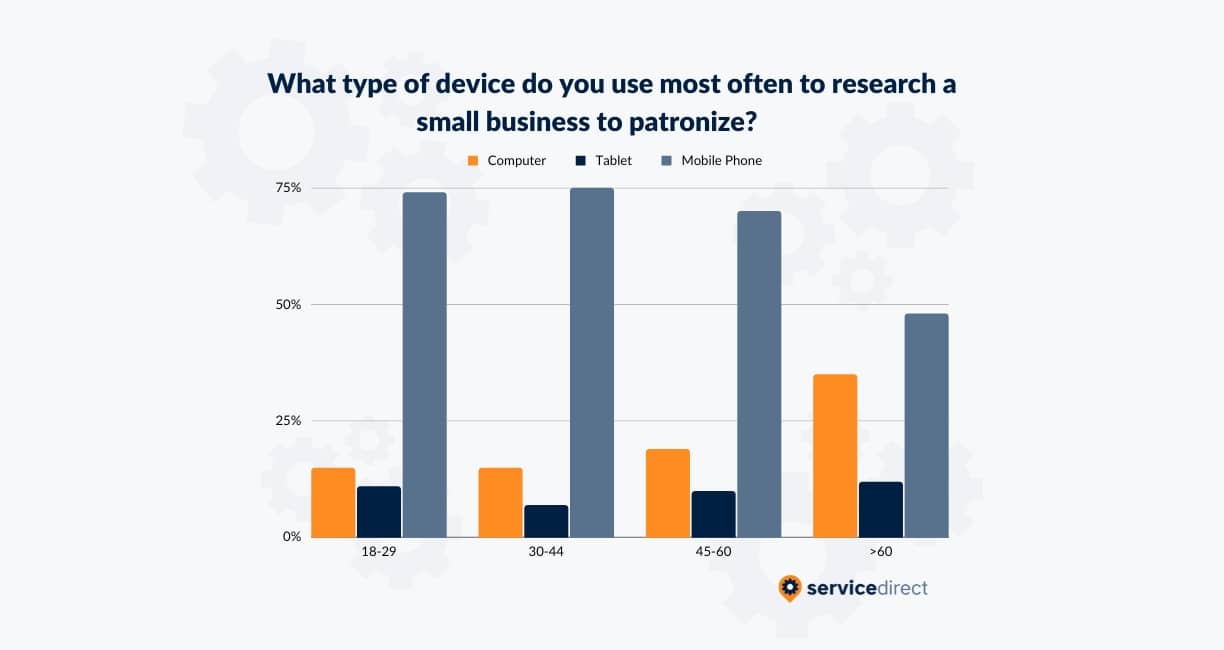
This means by designing websites, content, and communication strategies with mobile devices in mind, you can ensure a seamless and intuitive user experience that resonates with the fast-paced lives of these tech-savvy individuals.
Responsive mobile design is paramount, allowing your website to adapt seamlessly across various screen sizes. Swift loading times are equally crucial, as mobile users' patience for slow-loading pages is limited, and optimizing images is essential to prevent users from bouncing due to sluggish performance.
Mastering mobile optimization is not just an option, but a strategic necessity when engaging individuals 60 and under. A mobile-first mindset, responsive design, fast load times, and tailored content all contribute to crafting exceptional mobile experiences.
Bonus: Using (and Not Overusing) AI Across Generations
AI has quickly become part of how small businesses connect with customers, but its role isn’t the same for every generation. To get the most from these tools, it’s important to understand how different age groups respond to automation.
- Gen Z and Zillennials are comfortable interacting with AI-powered chatbots, smart scheduling tools, and personalized recommendations—as long as the experience feels seamless. They expect speed and convenience, but will disengage if your AI feels robotic or out of touch. Keep responses conversational, short, and mobile-friendly.
- Millennials see AI as a productivity booster but value transparency. They’re open to automated scheduling, reminders, and tailored service suggestions, but they want to know when they’re talking to a bot versus a real person. A quick note like, “I’m our virtual assistant here to get you booked fast” helps maintain trust.
- Gen X appreciates efficiency but still expects a strong human element. Use AI to streamline the basics, like confirming appointments or sending follow-up surveys, but ensure they can easily reach a live person if they have questions. For this group, AI should enhance reliability, not replace human support.
- Baby Boomers are increasingly using digital tools, but they may be less patient with AI if it feels confusing or impersonal. Keep AI interactions simple, clear, and optional. Offering a “Talk to a person now” button goes a long way in building confidence and loyalty.
The key in 2025 is to use AI as an enabler, not a replacement. Automate where it adds value, faster bookings, instant updates, smarter follow-ups, but always keep human support visible and accessible. When used thoughtfully, AI can strengthen relationships across generations rather than creating a disconnect.
IN CONCLUSION
In the dynamic realm of digital marketing, understanding and adapting to generational trends is a paramount strategy for small businesses.
From the burgeoning influence of TikTok in younger demographics to the enduring power of word-of-mouth recommendations across all age groups, these trends shape how businesses connect with consumers.
By embracing personalized communication and respecting the preferences of each generation, small businesses can navigate the evolving digital landscape, fostering meaningful connections and sustainable growth.
Related Articles:
- Top Digital Marketing Trends to Know in the Back Half of 2025
- 5 Things Customers Expect from Service Businesses
- 7 Types of Free Marketing Resources for Small Businesses
Editor's Note: This blog was originally published in August 2023 and has been updated to reflect current market trends and data.



